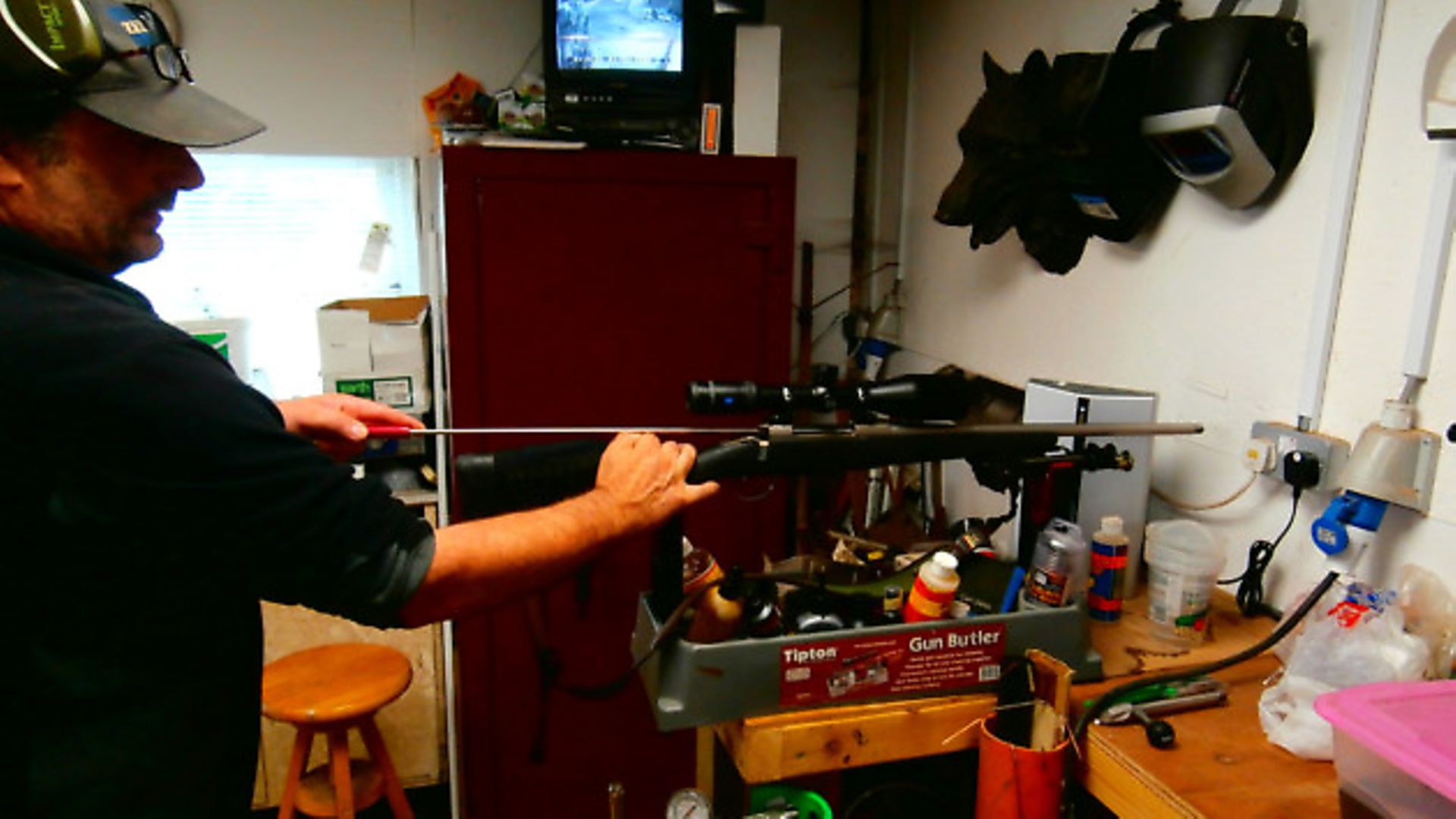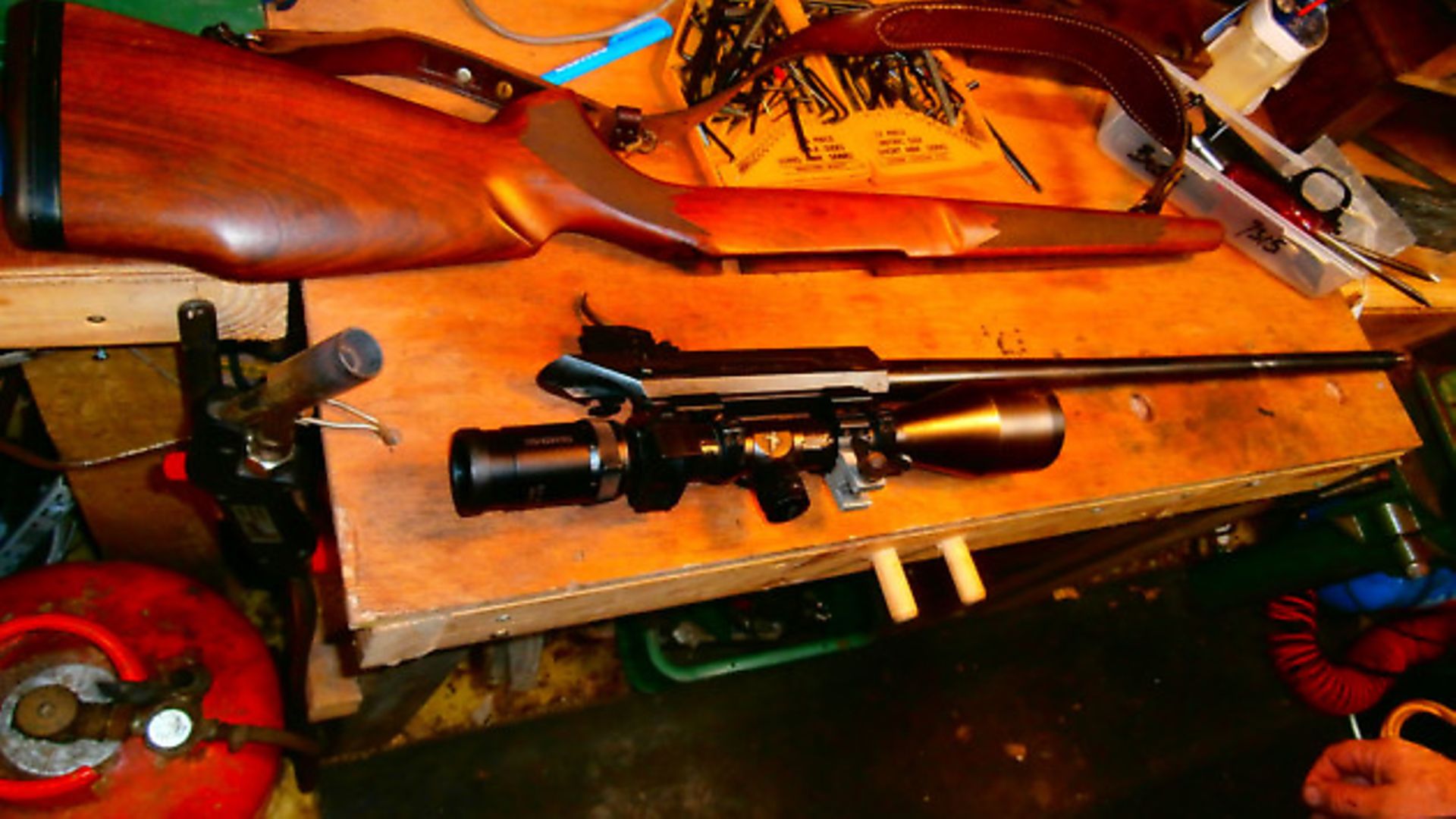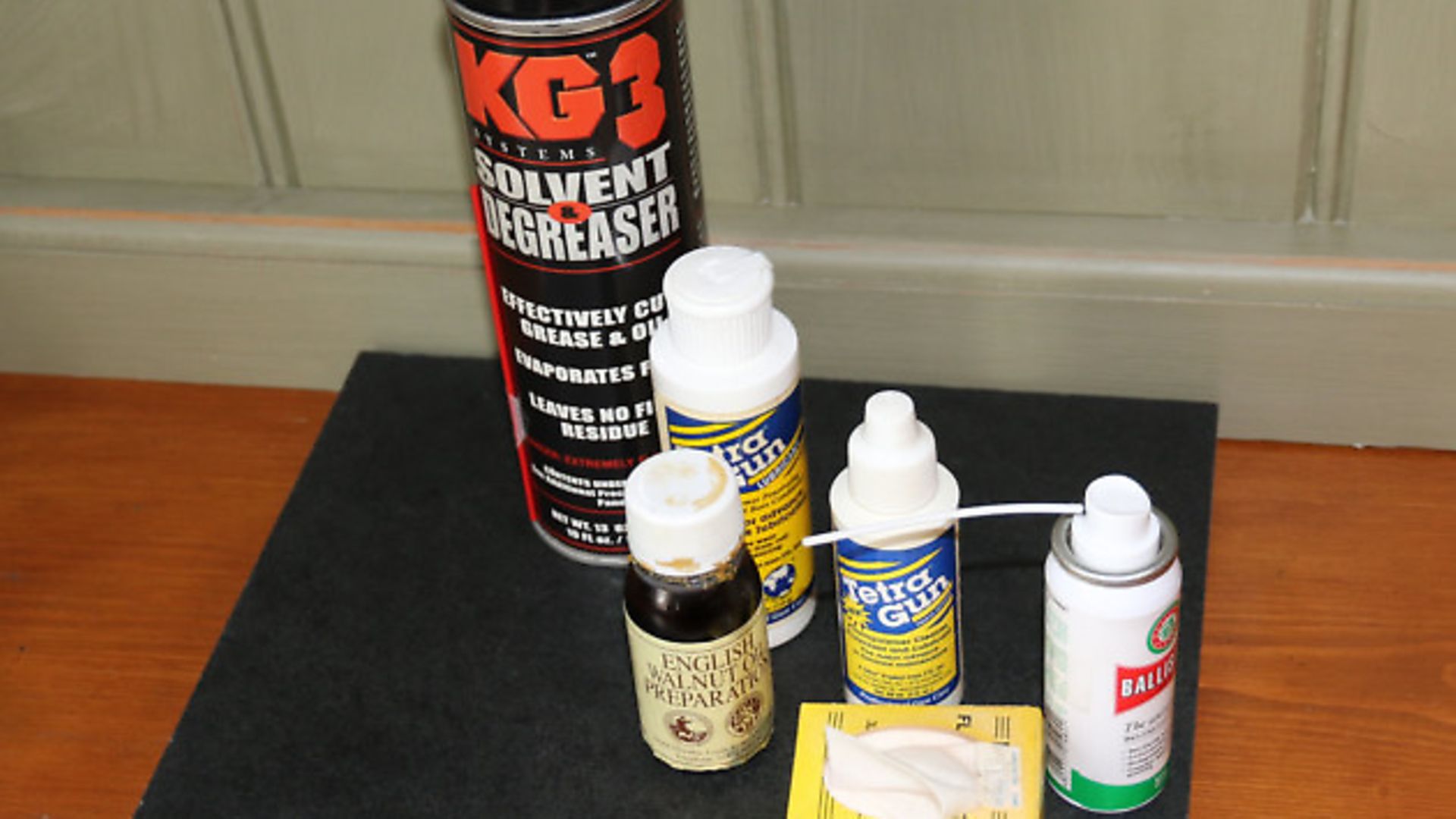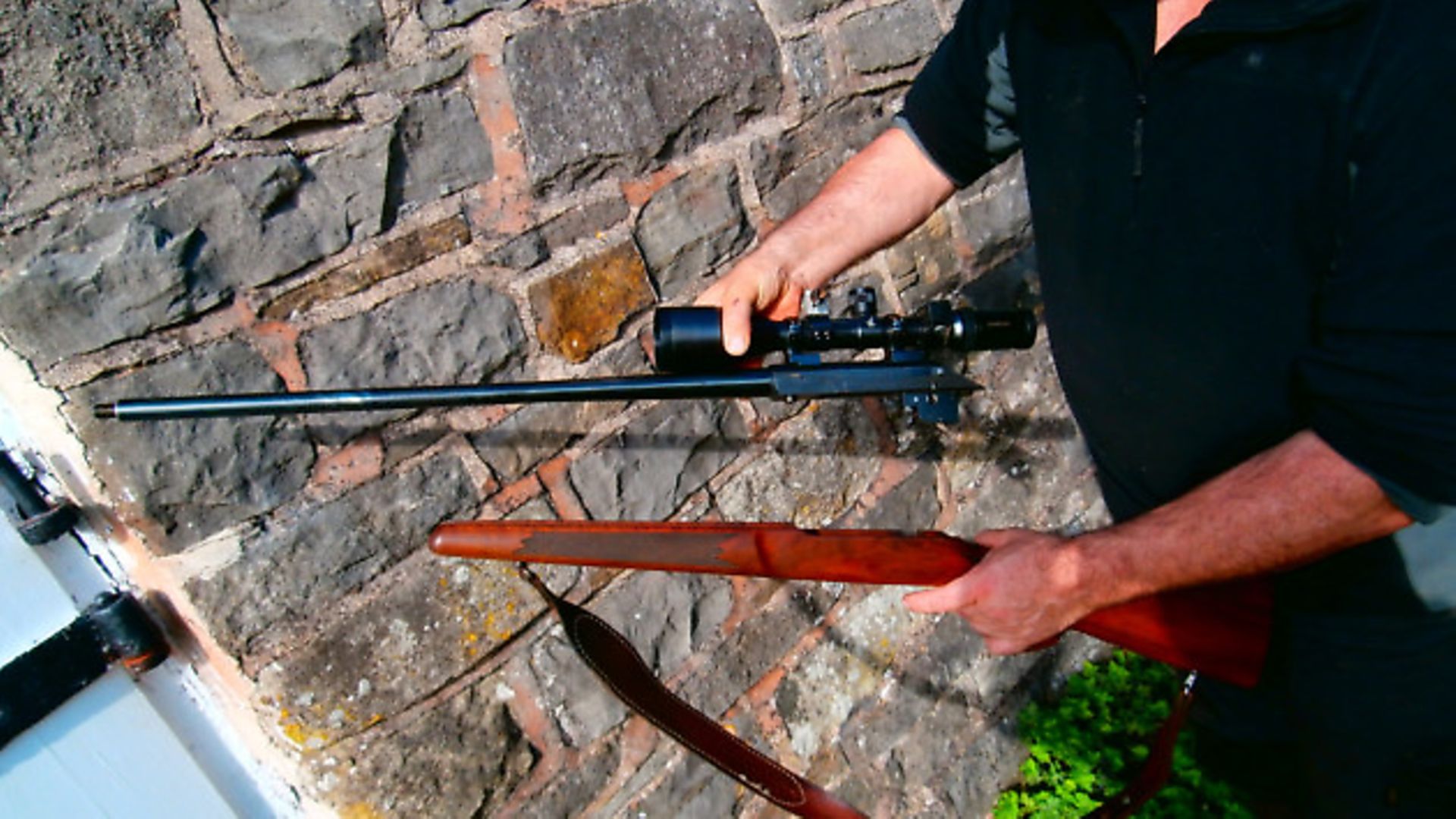If you’re a little lackadaisical about the cleanliness of your rifle, Mike Dickinson of the National Gamekeepers’ Organisation will inspire you to pull your socks up
 credit: Archant
credit: Archant
There’s an awful lot of nonsense said about rifle cleaning. It’s been said you should never clean a rifle and, if you do, you will have to re-zero it afterwards. That’s a load of piffle – the only reason you’d have to re-zero it is if you’re not cleaning it right, or if you’ve left it too long between cleans and you’ve got bits in the barrel affecting the accuracy. A rifle should be cleaned every time it’s been used.
Every time you shoot
I use a ‘gun butler’ – basically a tray with two mounts on the top – to keep the gun sturdy and all the cleaning fluids and patches to hand. If you don’t have one, you could stand it on the bipod so the gun remains stable.
My regular cleaning routine is to put a patch soaked in cleaning solvent on a rod and push it down the barrel. Give it a minute or two to get to work and dissolve any carbon fouling down there, and then push it through. Repeat with clean patches until they emerge free from dirt.
If the barrel is very dirty, I would consider using a phosphor bronze brush, but only with a lot of lubrication. Do this after using the wet patches if they still come away dirty. Dip the phosphor brush into cleaning fluid, push it through and unscrew it from the end. Only ever push the brush through in one direction so whatever scratches you may be putting in go with the line of the bullet.
 credit: Archant
credit: Archant
Wipe over the outside of the barrel and the stock with very thin oil – I would recommend a light gun oil such as 3-in-1. If it’s a wooden stock, it will need wiping over with linseed-based stock oil. This does two things: feeds the wood (enhancing the lustre and the texture) and waterproofs a little.
It’s important not to use too much oil as it won’t absorb and the stock will become tacky and dull. I tip the bottle of oil over and back again, and use the tiny drop left at the top for one side of the stock, then repeat the process and use another tiny drop for the other side. Dab the oil randomly onto the stock and, using the palm of your hand and the heat generated from it, massage into the stock. Once done, put it somewhere to dry out before putting it away. It’s a case of little and often. For wooden stocks this will be an ongoing job throughout the life of the gun.
At the end of my cleaning routine, I put a bit of cleaner on a patch and wipe the crown (the end of the barrel) because carbon will be held within the mod. That’s another common misconception – people often say you should leave the mod on, but you should always remove it after shooting. Mods hold gasses and those gasses will corrode the crown. Any imperfection here will cause the rifle to either hold onto the bullet for a millisecond longer, or let go a millisecond sooner, and will pull the bullet to one side or the other. People say taking the mod off will move the point of impact, but it shouldn’t do. If it’s a clean barrel, it won’t.
People often ask, ‘What’s the best cleaning fluid?’ There isn’t a ‘best’, different fluids clean different things. You can clean the rifle with one fluid, then use another patch soaked in a different cleaning fluid, and it’ll come out dirty again. So, different fluids must be moving different types of dirt. Here, we use a combination of about five different cleaning fluids, pushing them down on different patches to remove the different matters building up inside the barrel.
Copper removal
 credit: Archant
credit: Archant
Every tenth clean, or if I’ve put a lot of shots through the rifle, I will do the same regime with a cleaner specifically for copper removal. Copper is going to cause you the biggest problem. A layer of copper in the barrel will restrict the size of the bore, making it tighter and subsequently harder for the bullet to be pushed through. Pressures will rise and the point of impact will move.
There’s no point in doing the clean with just a copper cleaner as it won’t remove powder residue or other dirt, so you need to take care of those first with the cleaners mentioned above.
Every 12 months
The barrel needs to be taken out of the stock and given a once over every 12 months to clean out any debris that may have built up under there. I like to use a very thin smear of Vaseline or gun grease just to stop the moisture from holding under the stock.
If you are unsure about disassembling the rifle yourself, it’s worth taking it to a gunsmith. They will usually be able to spot if there are any issues and rectify them before they become a big expensive problem.
 credit: Archant
credit: Archant
Glassware and extras
Make sure the mounts are tight and nothing has come loose. I try not to touch the glass at all, only using a lens cloth. Every now and again, if there are any raindrops dried onto the glass or bits of dust, a little wipe over with a purpose-made lens cloth and some Windolene will do the job.
Never use dusters or paper towels on the glass because they are abrasive, and definitely don’t rub the glass, especially when out in the field as there will be enough oil and grit on your fingers to start scratching the lens.
If you’ve got a leather strap on your sling, give that a clean and a feed with some Ko-Cho-Line leather cleaner or something similar. Leather becomes hard and brittle when exposed to rain and then dried out, so feeding it regularly will help keep it supple and prolong the life. Wood and leather are similar – they’re not living materials but they do benefit from being ‘fed’ and looked after.
Lots of people are buying borescopes nowadays. I’ve known several shooters who have bought one, put it down the barrel and absolutely terrified themselves with what they’ve seen. They’ve decided the gun is ruined and they need to sell it. In my opinion, for your recreational shooter, a borescope will only cause unnecessary worry, in which case it’s better to leave them to gunsmiths and professionals, for whom they are an invaluable tool. I use them regularly. I will often use them to check rifles before people buy them, to establish how much life is left in the barrel.
Common misconceptions
People have a habit of putting a patch with some oil on it down the barrel after cleaning the gun. This is okay if you’re going to park the gun up for any length of time, as a small smear of oil on a patch can help protect the gun. But you need to clean it again before shooting to ensure you have a perfectly clean barrel.
What you really don’t want is any oil in the barrel as you fire it. Liquids – oil or cleaning solvents – will not compress. The bullet will push a bit of the oil down the barrel, causing the oil to overtake the bullet and either squash it (affecting how it flies) or bulge the barrel.
We’ve seen a few people with a splash of water or oil down the barrel, and it’s caused it to bulge upon firing. The only thing we can do is cut the barrel off – if the bulge is far enough down the end of it – then re-crown and re-screw cut the barrel. If we weren’t able to do that, we’d be forced to just throw the barrel away.
Excessive use of oil on wooden stocks is a common mistake, and although it won’t cause the same issues with performance, it won’t do the stock any good and will result in sticky, dull wood.
Bore snakes are becoming increasingly popular, but they aren’t necessarily a good tool. They don’t pull out straight and can wear away the crown, and they have a habit of snapping in the barrel, which can cause serious problems. It can even mean the barrel has to be discarded.
Again, don’t be sucked in by the misconception that cleaning the rifle means re-zeroing it. The only reason a rifle would need re-zeroing after cleaning is if it hasn’t been cleaned properly, or if you’ve been a bit lax with the regular cleaning routine and debris has been allowed to build up.